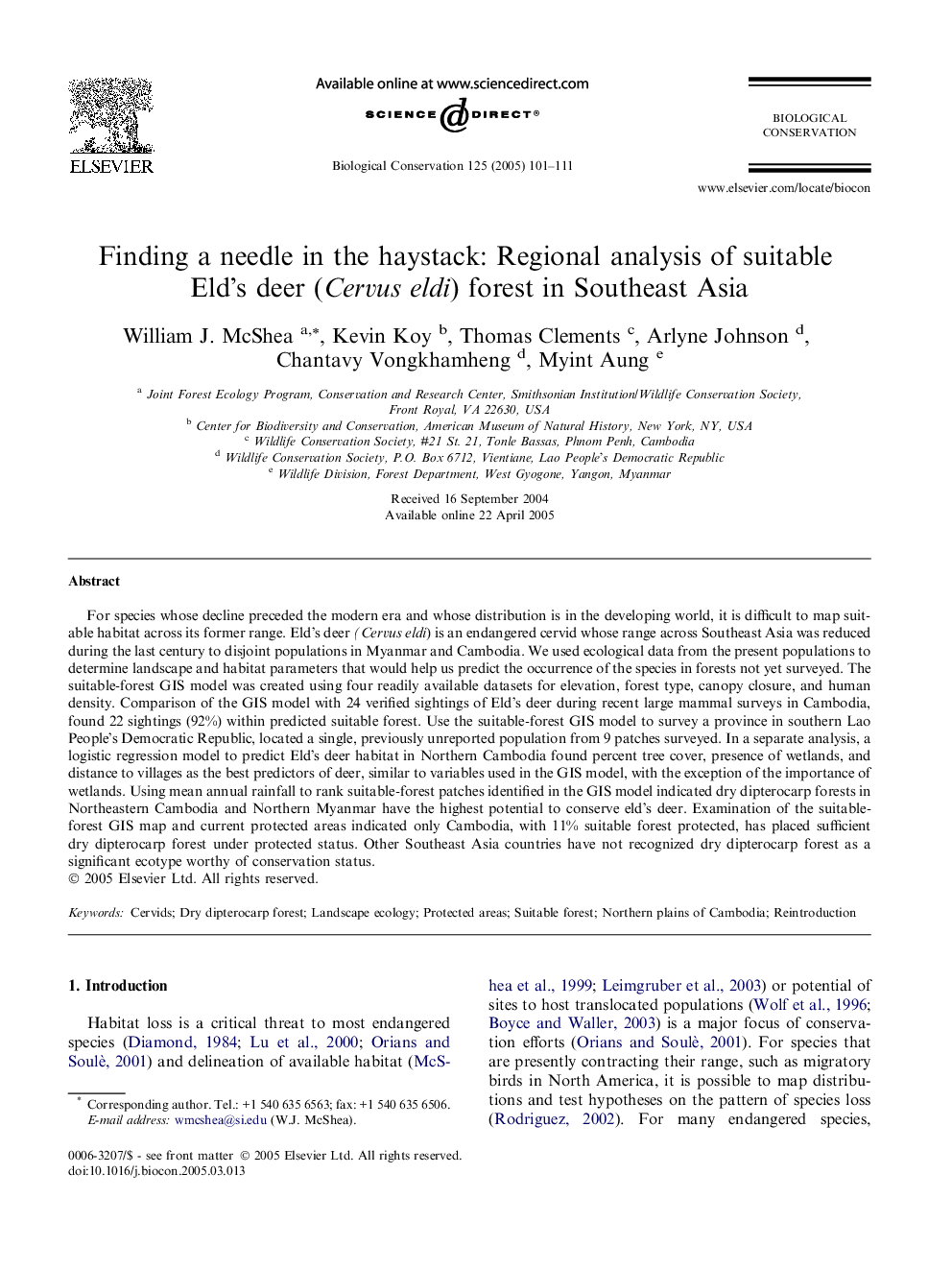| کد مقاله | کد نشریه | سال انتشار | مقاله انگلیسی | نسخه تمام متن |
|---|---|---|---|---|
| 9446149 | 1304651 | 2005 | 11 صفحه PDF | دانلود رایگان |
عنوان انگلیسی مقاله ISI
Finding a needle in the haystack: Regional analysis of suitable Eld's deer (Cervus eldi) forest in Southeast Asia
دانلود مقاله + سفارش ترجمه
دانلود مقاله ISI انگلیسی
رایگان برای ایرانیان
کلمات کلیدی
موضوعات مرتبط
علوم زیستی و بیوفناوری
علوم کشاورزی و بیولوژیک
بوم شناسی، تکامل، رفتار و سامانه شناسی
پیش نمایش صفحه اول مقاله

چکیده انگلیسی
For species whose decline preceded the modern era and whose distribution is in the developing world, it is difficult to map suitable habitat across its former range. Eld's deer (Cervus eldi) is an endangered cervid whose range across Southeast Asia was reduced during the last century to disjoint populations in Myanmar and Cambodia. We used ecological data from the present populations to determine landscape and habitat parameters that would help us predict the occurrence of the species in forests not yet surveyed. The suitable-forest GIS model was created using four readily available datasets for elevation, forest type, canopy closure, and human density. Comparison of the GIS model with 24 verified sightings of Eld's deer during recent large mammal surveys in Cambodia, found 22 sightings (92%) within predicted suitable forest. Use the suitable-forest GIS model to survey a province in southern Lao People's Democratic Republic, located a single, previously unreported population from 9 patches surveyed. In a separate analysis, a logistic regression model to predict Eld's deer habitat in Northern Cambodia found percent tree cover, presence of wetlands, and distance to villages as the best predictors of deer, similar to variables used in the GIS model, with the exception of the importance of wetlands. Using mean annual rainfall to rank suitable-forest patches identified in the GIS model indicated dry dipterocarp forests in Northeastern Cambodia and Northern Myanmar have the highest potential to conserve eld's deer. Examination of the suitable-forest GIS map and current protected areas indicated only Cambodia, with 11% suitable forest protected, has placed sufficient dry dipterocarp forest under protected status. Other Southeast Asia countries have not recognized dry dipterocarp forest as a significant ecotype worthy of conservation status.
ناشر
Database: Elsevier - ScienceDirect (ساینس دایرکت)
Journal: Biological Conservation - Volume 125, Issue 1, September 2005, Pages 101-111
Journal: Biological Conservation - Volume 125, Issue 1, September 2005, Pages 101-111
نویسندگان
William J. McShea, Kevin Koy, Thomas Clements, Arlyne Johnson, Chantavy Vongkhamheng, Myint Aung,